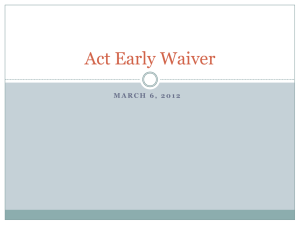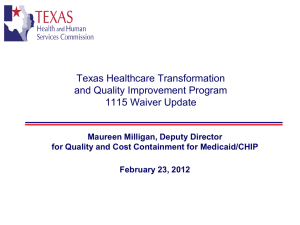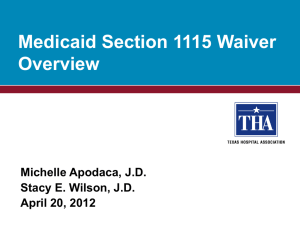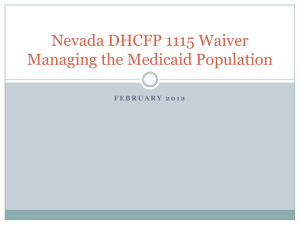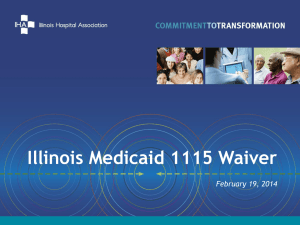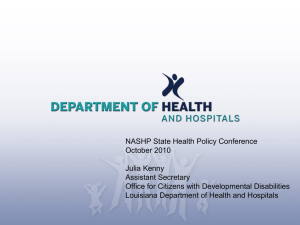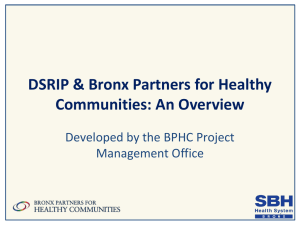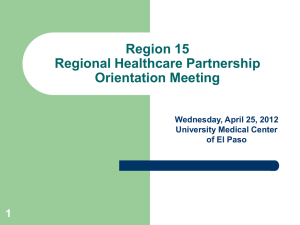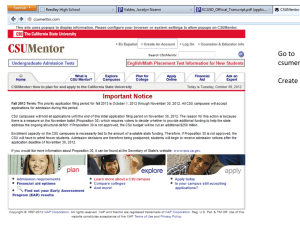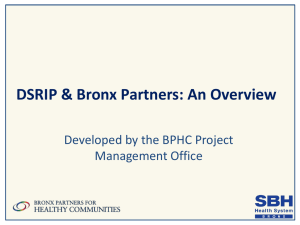Teaching Hospital of Texas- 1115 Waiver
advertisement
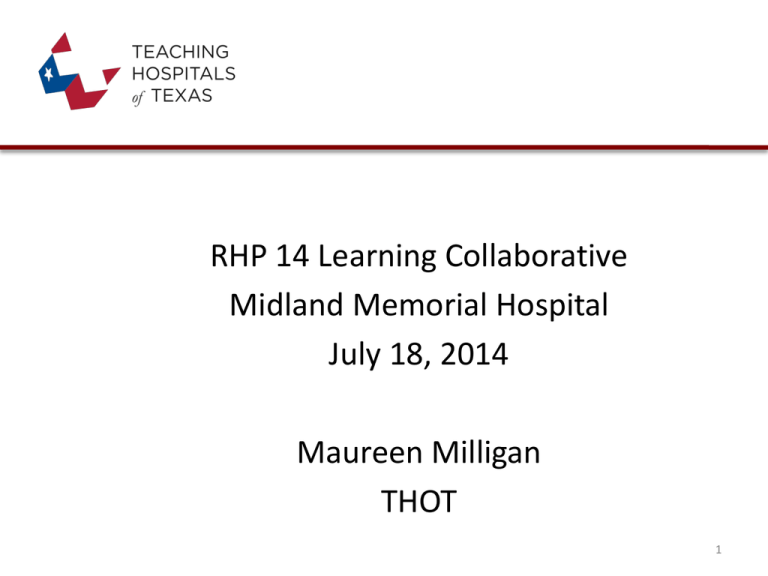
RHP 14 Learning Collaborative Midland Memorial Hospital July 18, 2014 Maureen Milligan THOT 1 Current Waiver • The Texas Healthcare Transformation and Quality Improvement Program was approved on December 12, 2011 for a demonstration period ending September 30, 2016. • Texas Goals at the Time: • Protect UPL funding with a Medicaid Managed Care Expansion • The current waiver includes : • The geographic expansion of comprehensive managed care • Creation of a $29 billion Safety Net Care Pool Funding, targeting uncompensated care (UC) and Delivery System Reform Incentive Payments (DSRIP) • In order to preserve access to waiver funding and continued operation of Medicaid managed care, the waiver must be extended or renewed. 2 Waiver Development • CMS recommended Texas use the California waiver approach (then the Massachusetts approach…) • DSRIP as a tool to transform health care • Texas’ argument for the waiver and DSRIP • UC as preferred by hospitals • DSRIP preferred by CMS • Community Assessments • Provider Collaboration & Coordination – new partnerships; new approaches; local innovation • Outcomes and Metrics as basis for payment – Accountability and Transparency compared to UPL funding 3 Waiver Timeline • December 12, 2011 – September 30, 2012 DY 1 • October 1, 2012 – September 30, 2013 DY 2 • October 1, 2013 – September 30, 2014 DY 3 • October 1, 2014 – September 30, 2015 DY 4 • • • • March 31, 2015 HHSC transition plan due to CMS Public transparency process March 31, 2015 Waiver under Section (a) Request due to CMS September 30, 2015 Waiver Extension (e) Request due to CMS • October 1, 2014 – September 30, 2016 (waiver expires) • DY 5 Negotiations: from request through approval no later than 10/1/2016 4 Waiver Extension Authorities Section 1115 identifies several potential extension authorities though some are only available to States at specific times during their renewal. • The authorities have different time frames and characteristics. • All states with new 1115 waivers receive the initial authority at 1115(a) which provides for up to five year approval periods. • Section 1115(e) is the authority that states may use to extend a waiver authorized under 1115(a). States may request an extension using the same terms and conditions as utilized in the initial approval. Extensions under this authority can be provided for 3 years. • Section 1115(f) is the authority that states may use to extend a waiver that was extended under 1115(e). All terms and conditions are open to negotiation under this authority. Extensions under this authority can be provided for 3 years. • Section 1115(a) is the authority that states may use to extend a waiver extended under any of the authorities above. The renewal period can range up to 5 years, all terms and conditions are open for negotiation. 5 Construction of Waiver Pools The State’s budget neutrality agreement consists of two components – 1. per capita amounts attached to populations, including managed care savings attributable to populations under the 1915(b) waiver that was subsumed, and 2. amounts attributable to three UPL programs, inpatient hospital, outpatient hospital and physician. Over five years, the diverted UPL programs contributed approximately $8.3 billion to the total $29 billion in pool spending and the remaining $20.7 billion is attributable to managed care savings achieved through the demonstration. DY 1 UC DY 2 DY 3 DY 4 DY 5 Total $3.7 b. $3.9 b. 3.534 b. $3.348 b. $3.1 b. $17.582 b. $500 m. $2.3 b. 2.666 b. $2.852 b. $3.1 b. $11.418 b. Total/DY $4.2 b. $6.2 b. $6.2 b. $6.2 b. $6.2 b. $29 b. % UC 88% 63% 57% 54% 50% 60% % DSRIP 12% 37% 43% 46% 50% 40% DSRIP 6 Current DSRIP Pool • Total of 20 Regional Health Partnerships throughout the State • Total of 1,258 individual projects as of December 31, 2013 • Total of $2.1 Billion (all funds) claimed under the DSRIP in through January 2014 7 Strategies for Arguing DSRIP Success DSRIP – Texas Construction is Unique among all states with DSRIP. What can we do to support the goals and objectives in an extension? • Utilize RHPs (Community Level Approach) • • • • Unique/Unusual Partnerships (Provider Level Approach) • • • • Collaboration of public and private providers True community and Healthy Neighborhood approach How can we demonstrate the impact of a community approach? Collaborations made possible because of DSRIP funding Developing new service modules (combining social and medical services for example) Identify successful examples – data to demonstrate Impact on Communities and Individuals (People Impacted Level) • • • Changes in access, health status, quality of life, community outcomes Examples from RHPs and specific projects How best to demonstrate impacts on people? 8 Strategies for UC Funding What can we do to support the goals and objectives? Uncompensated Care Pools • What arguments to use for continued access to UC funding? • What is the likelihood of increasing the available funding? • How does request for UC funding relate to no Texas’ Medicaid Coverage Increase? Comments and Discussion 9 RHP 14 Learning Collaborative Midland Memorial Hospital • Q&D (Questions & Discussion) Thank you! 10

